






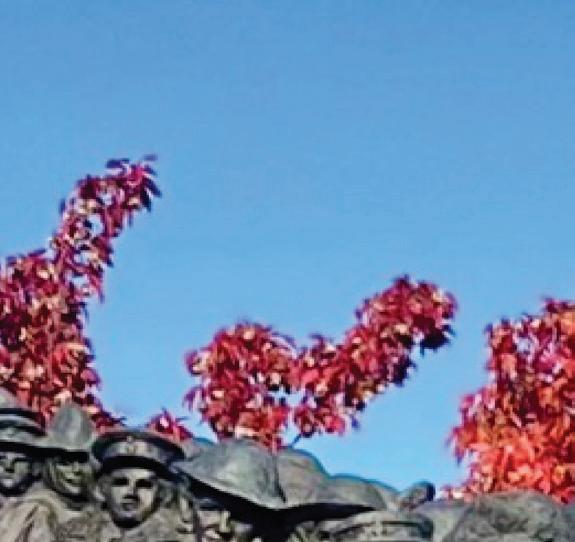















What's one event that you are looking forward to in November?

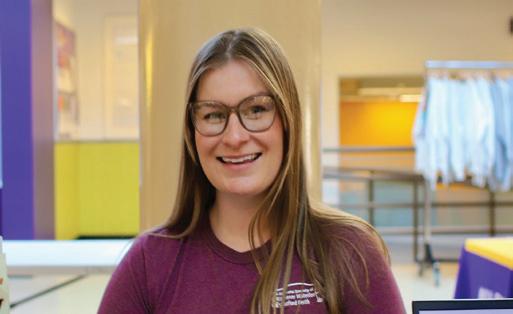





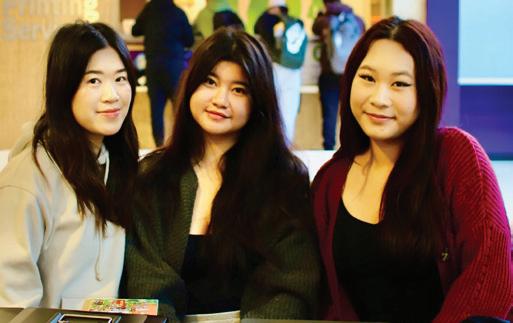
-

CONTRIBUTORS
NEXT ISSUE
DECEMBER 5, 2024
CORD STAFF
EDITOR-IN-CHIEF Bronte Behling editor@thecord.ca
MANAGING EDITIOR Madalyn Mostacci managingeditor@thecord.ca
CREATIVE DIRECTOR Rytham Sahni
creative@thecord.ca
MULTIMEDIA & WEBSITE
DIRECTOR
Aysia Steiner multimedia@thecord.ca
NEWS DIRECTOR Sangjun Han newsdirector@thecord.ca
ARTS EDITOR VACANT arts@thecord.ca
OPINION EDITOR Abigail Dombrovsky opinion@thecord.ca
SPORTS EDITOR Birnavan Varnacumaaran sports@thecord.ca
SOCIAL MEDIA EDITOR Santosh Chandrasekar news@thecord.ca
PHOTO EDITOR VACANT photo@thecord.ca
LEAD PHOTOGRAPHER Wardah Arain photos@thecord.ca
EVENTS AND PROGRAMMING HEAD Simran Gajbhiye events@thecord.ca
Jasmine Abel Wintana Afeworki Harleen Kaur Dhillon Andrew Eaton Abdul Aziz Hyder Sneh Leighl Maddie McGrath Elizabeth Mendez Clara Rose Jack Vrolyk
EDITOR’S CHOICE "While











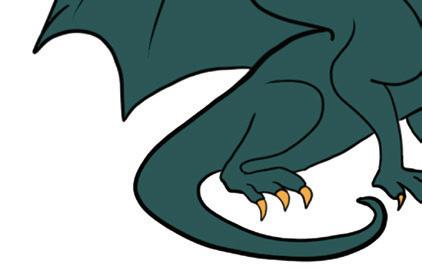




NEWS DIRECTOR
SANGJUN HAN newsdirector@thecord.ca



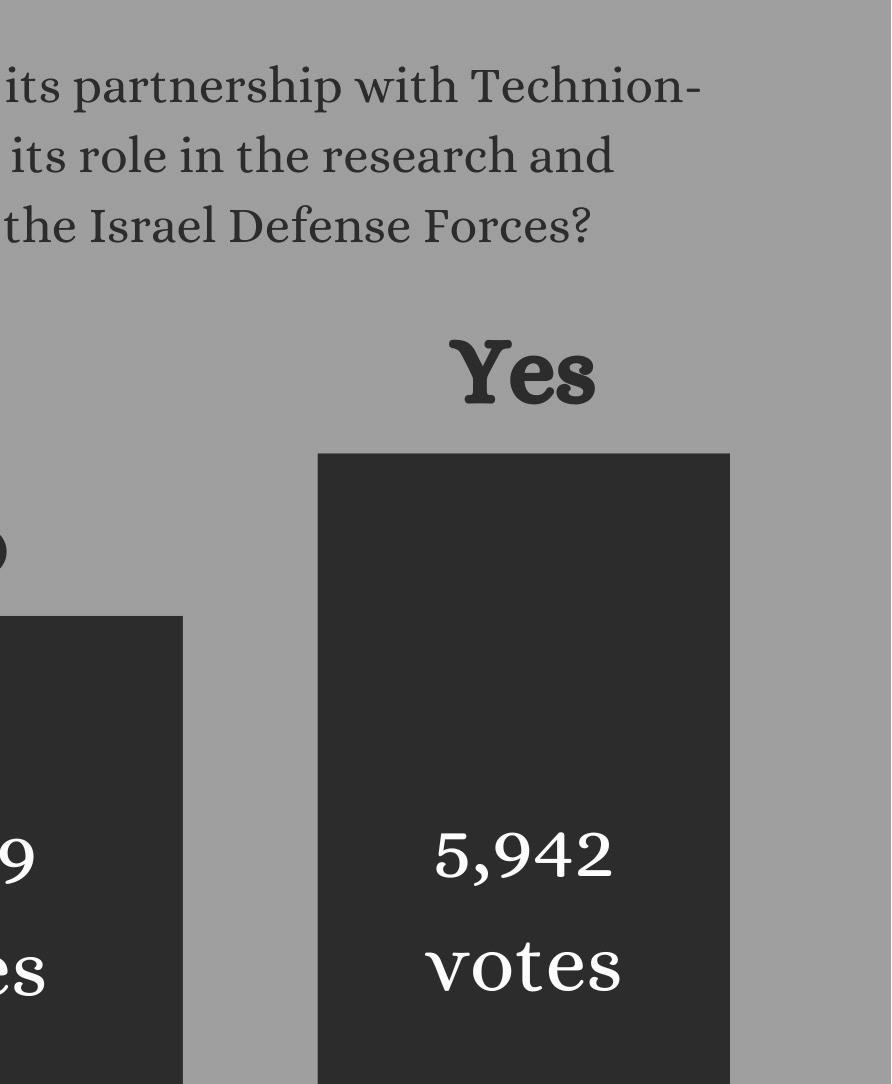



SANGJUN HAN NEWS DIRECTOR
e Waterloo Undergraduate Student Association (WUSA) announced the votes from the 2024 Responsible Partnerships and Investments referendum on Oct. 8. Results were posted on the Waterloo Undergraduate Students’ Union website.
According to a press release from the WUSA website, 83.9 per cent of referendum voters said "yes" to the University of Waterloo ending its partnership with the Technion-Israel Institute of Technology and 88.6 per cent of the voters said "yes" to the University of Waterloo reviewing their partnerships and investment portfolios.
" is one had a much better turnout than we expected," said Nicholas Pfei e, the WUSA president. "It's higher than most of our previous general elections we had turnout."
Arya Razmjoo, the vice-president of WUSA, said the discussion
topic of this year’s referendum could be one of the reasons why there was a higher turnout this year.
"We have seen an increase in student engagement in our organization in the last two years," he said.
A WUSA referendum is a decision voted on by the association members. ey hold referendums to answer questions posed by UW undergraduate students and take direct action.
Undergraduate students bring up an issue and draft a petition, then submit it to the WUSA Chief Returning O cer, who completes approval and vetting processes and sends the document to the Board of Directors. ey approve the petition, which later becomes a referendum.
UW students create the referendum questions, which are then approved by the board. e Board of Directors then form two student-led groups, the yes (for the question) and no (against the question) committees.
ese two groups campaign for their position, and WUSA members vote for or against the questions. Voting results are tallied and submitted to the Board to
determine next steps.
In May, WUSA received a petition signed by over 10 per cent of the UW students from a WUSA member asking the board of directors to review the partnership between the University of Waterloo and the Technion-Israel Institute of Technology.
e petition outlines how Israel is violating human rights, breaching international law and committing war crimes, which is made possible by the Israeli academic institutions that helped develop weapons and technologies with full knowledge they are used to harm Palestinians.
"By knowingly developing technology used for such a purpose, they are actively and directly complicit in the violations of the International law," the petition stated.
e petition explains how the University of Waterloo is helping the Israeli government harm Palestinians through their partnership with the Technion-Israel Institute of Technology.
Both Pfei e and Razmjoo said the genocide in Gaza could be one of the reasons why more students participated in the referendum this year, but it's di cult to discern
this fact because the voting was anonymous.
"We don't record demographic information. We want to ensure people's votes are secret," said Pfei e when asked about the demographic of the students who voted during the referendum and the potential that most voters were supporters of the Palestinian community.
"One of the big things here is this is not an us-versus-them situation," he said, explaining how the union is trying to keep the referendum as neutral as possible without letting personal opinions a ect the votes.
He said WUSA didn't want the referendum to turn into a debate on who is in the right and who is in the wrong. "We are here to promote student voice, to provide the capacity for students to advocate and promote themselves," said Razmjoo, explaining how the union is trying to protect the voters' privacy while advocating their opinions. "We are a neutral organization, which will take whatever advocacy positions the students want us to take."
Despite Razmjoo’s neutral perspective on the referendum votes, Pfei e explained that he favoured
the University of Waterloo, ending its partnership with the Israel Technology Institute.
"I feel like the ongoing development of weapons research only puts humanity more at risk," Pfei e said. "So, I'm comfortable advocating on the student's behalf for what they have now expressed as a speci c desire to see the partnership with Technion ended."
Despite the votes favouring the termination of the partnership between the University of Waterloo and the Technion-Israel Institute of Technology, Pfei e explained the union still wants to discuss the matter further to ensure it's not showing one-sided opinions toward Israel and their part in the genocide in Gaza.
" e students have expressed how they feel, but now, as the central organization, we have to explain our plans, right?" Nick said. "So, they can say something, but then we have to turn that into actionable items."
e Waterloo Undergraduate Students’ Union Board of Directors are reviewing the voting results and will determine what actions they should take. ey will announce their decision in the coming months.

On Nov. 8, Canada celebrates National Indigenous Veterans Day to recognize the contribution and sacrifice of First Nations, Inuit and Métis individuals in military service.
According to the Government of Canada, Approximately 7,000 Indigenous men aged 20 to 35 enlisted in the First and Second World Wars and roughly 12,000 First Nations, Métis, and Inuit peoples have served in the Canadian Armed Forces over the last century.
Gladwyn Badger is the events and special projects coordinator in the office of Indigenous relations at the University of Waterloo.
She served in the Canadian military from 2009 to 2012 as a gunner for the 1st Regiment in the Royal Canadian Horse Artillery at the Canadian Forces Base in Shilo.
“Both of my grandfathers, Peter and Roger, served in World War II while my great-grandfather Alfred fought in World War I. These men did not receive the same recognition as their fellow soldiers upon returning home,” said Badger. “I

feel a strong obligation to honor their legacy and acknowledge the sacrifices they made for a country that often marginalized them.”
In addition to the dangers faced by those on the front line, Indigenous soldiers also had the challenge of handling racism and a language barrier due to English being the predominantly spoken language throughout the trenches.
In 1876, First Nations were given a conditional right to vote, but only if they renounced their Indian
status.
Because of this, many Indigenous veterans were unable to receive veterans’ benefits.
Often, the Canadian government denied any support, banning soldiers from the Royal Canadian Legion halls where veterans would gather to socialize with other soldiers and receive advice on post-war benefits.
The government, under the Indian Act, also expropriated reserve lands without band consent during

Registration for Wilfrid Laurier University’s Design for Change challenge, hosted by the user experience (UX) design program, is open until Nov. 12.
This year for the challenge’s third installment, participants will aim to answer the question: How can we harness generative AI to make education more accessible?
The challenge is entirely virtual and takes place over a 10-week period where students take part by creating human-centred design methodologies that develop and propose a solution to the challenge question.
Resources such as mentors and workshops will be provided to participants as no prior experience is required. Undergraduate-level students from any Canadian university or college can participate and submissions for the challenge are due on Jan. 19.
“I think [participants] can
highly benefit from that level of collaboration and the resources that we have available to them to help them succeed,” said Andrew Hawling, the strategic relationship officer for the UX design program, when describing how members from the challenge come from varying academic backgrounds — including artificial intelligence and accessibility.
On Jan. 29, the top five finalists will be announced, followed by the finalists pitching their solutions to a panel of judges virtually on Feb. 4.
Submissions will be evaluated based on usefulness, potential impact and design process. More than $15,000 in prizes can be won, with the first-place winner receiving $1,100 per team member, the second-place team winning $600 per member and the third-place group earning $300 per member.
The challenge was first hosted in 2021 and centered around climate change. The second installment was hosted last year with a focus on homelessness.
Abby Goodrum, a UX design professor and the program coordinator, explained that each year, the challenge has seen around 400
participants enroll initially and 150 who stick with the challenge all the way through.
“We’ve been wildly successful since the very first one,” she said.
Adam Joaquin, now a user experience specialist and mentor for participants in this year’s challenge, was a finalist in the 2023 challenge.
He said he heard about the challenge through one of his professors at the University of Toronto. Joaquin teamed up with a classmate to create their solution submission for the challenge’s homelessness objective.
“Through our research, we wanted to figure out what user group to focus on to best tackle this issue. We focused on youth and then more specifically, we focused on structural prevention by promoting social inclusion and community engagement for the youth,” he said. “We developed this initiative called the Branch Out Initiative, which harmonizes the public libraries as well as youth services.”
When asked if he recommended participating in the design challenge, Joaquin gave an overwhelming yes.
be intercepted by enemy frequencies during the Second World War. During the Second World War, those still in Canada’s First Nations community were a cornerstone of support, donating a large amount of money, clothing and food to help aid the troops overseas. They also granted use of land on reserves for the construction of airports, rifle ranges and defense installments.
“I would encourage those who disagree with having a separate Indigenous veterans’ day to take the time to listen to the stories and experiences of Indigenous veterans,” said Badger. “If Indigenous veterans had been fully acknowledged and recognized from the start, we might not have needed a separate day to honor their contributions.”
this time.
Many First Nations soldiers were praised for their marksmanship, including their stealth and patience. A chunk of these soldiers became snipers, sharpshooters and renaissance scouts or men who gathered information in enemy territory.
Another feat was the code talkers, men who would translate special and highly sensitive information over the radio in Cree, their native language, so they couldn’t
For example, Francis Pegahmagabow was an Ojibwe Anishinaabeman who was a sniper from the Canadian Corps and served during the First World War. He held a divisional record of 115 fatal shots and was awarded a military medal and bar for his courage under fire. “Open conversations help bridge the gap and gather a deeper appreciation for the unique sacrifices made by Indigenous veterans,” said Badger. “Understanding their motivations for joining the military and the challenges they faced can provide valuable insight into why this day is significant.”

“It is great for practice, portfolio and resume work. And I’d say after school, there’s not much time to be doing these kinds of things anyway so if you’re in school, might as well do it,” he said. For more information on the Design for Change challenge and registration, visit wludesignforchange.com.

SHERYL WILSON MADAKKAI LEAD REPORTER
Nov. 20 marks the 25th year of Transgender Day of Remembrance in Canada, which remembers the lives of those who were lost due to anti-trans violence. To raise awareness of transgender individuals and the challenges they encounter, organizations and individuals nationwide take part in Transgender Awareness Week every year from Nov. 13 to 19.
Gwendolyn Ann Smith, a transgender woman and advocate for the transgender community, established the Transgender Day of Remembrance (TDOR) in 1999 as a vigil to remember Rita Hester, a black transgender woman who was murdered in 1998. In addition to honoring all the transgender individuals who have been killed by violence since Rita Hester’s passing, the vigil established a significant custom that has grown into the yearly Transgender Day of Remembrance.
“Transgender Awareness Week
takes place in the week leading up to the TDOR. It’s an opportunity for allies to educate themselves on the issues facing trans folks in their community,” said Scott Williams, the executive director of Spectrum, Waterloo Region’s Rainbow Community Space.
Transgender Awareness Week is celebratory and organizations such as It Gets Better Canada and Egale Canada put together virtual toolkits with articles and videos that are used in businesses and schools to increase awareness and visibility of transgender and gender-diverse individuals.
“Transgender Day of Remembrance is a day to remember all those whose voices were not able to be heard, for those who never got to be themselves. But also, to remember those who fought for our rights,” said Cambridge local Brock O’Neil, who identifies as non-binary. “To those who want to be a better ally, connect with any of your queer family, learn our history and most importantly, always be kind and accepting. Choose love, not hate.”
For Williams, allyship starts with education. He says that individuals should do research and find resources that help them under-
stand issues that the transgender community is facing.
“Once people have educated themselves, they can help by amplifying the voices of trans people,” said Williams. “If you’re on social media, follow trans folks and see what they’re talking about. Help to spread the word about what’s happening.”
Williams also suggested participating in workshops that educate on transgender inclusion, including Spectrum’s Rainbow Diversity Training. He advised that allies follow the work of national organizations, like Queer Momentum, who advocate for safe communities.
Spectrum’s Rainbow Diversity Training is a service that helps companies or organizations become more welcoming, accepting and adapting towards people of all genders. To assist companies in becoming more inclusive and inviting to 2SLGBTQIA+ employees, clients and other partners or stakeholders, Spectrum provides a range of workshops in 2SLGBTQIA+ cultural competency.
This refers to making 2SLGBTQIA+ employees and clients to feel safe and included in the workplace. Of the actions that can be taken to support , voting

is still one of the most important. Williams said voting is still one of the most important actions that can be taken by allies to support 2SLGBTQIA+ individuals. “One can’t be an ally to
RYTHAM SAHINI/CREATIVE DIRECTOR
2SLGBTQIA+ people if you’re voting for candidates or parties that would take away the rights of trans people and endanger 2SLGBTQIA+ children and youth with their policies,” said Williams.

Wilfrid Laurier University and St. George’s University (SGU) in Grenada, an accredited international medical school, have launched a new admission cooperation for qualifying students to enroll in the School of Medicine at SGU on a fast-track basis.
Over 23,000 graduates from the School of Medicine have entered the global healthcare system.
Through this pathway, students who successfully finish Laurier’s four-year health science program can apply for SGU’s four-year MD program. This also benefits the students who are currently enrolled in pre-medical courses and in their third year.
The program is also open to students who have graduated from Laurier within the last five years.
Canadian students applying from Laurier must have a cumulative GPA of 9.0 and Science course GPA of 8.0, have a minimum of two but no more than five recommendation letters and complete an interview to be eligible.
They must also complete a list of
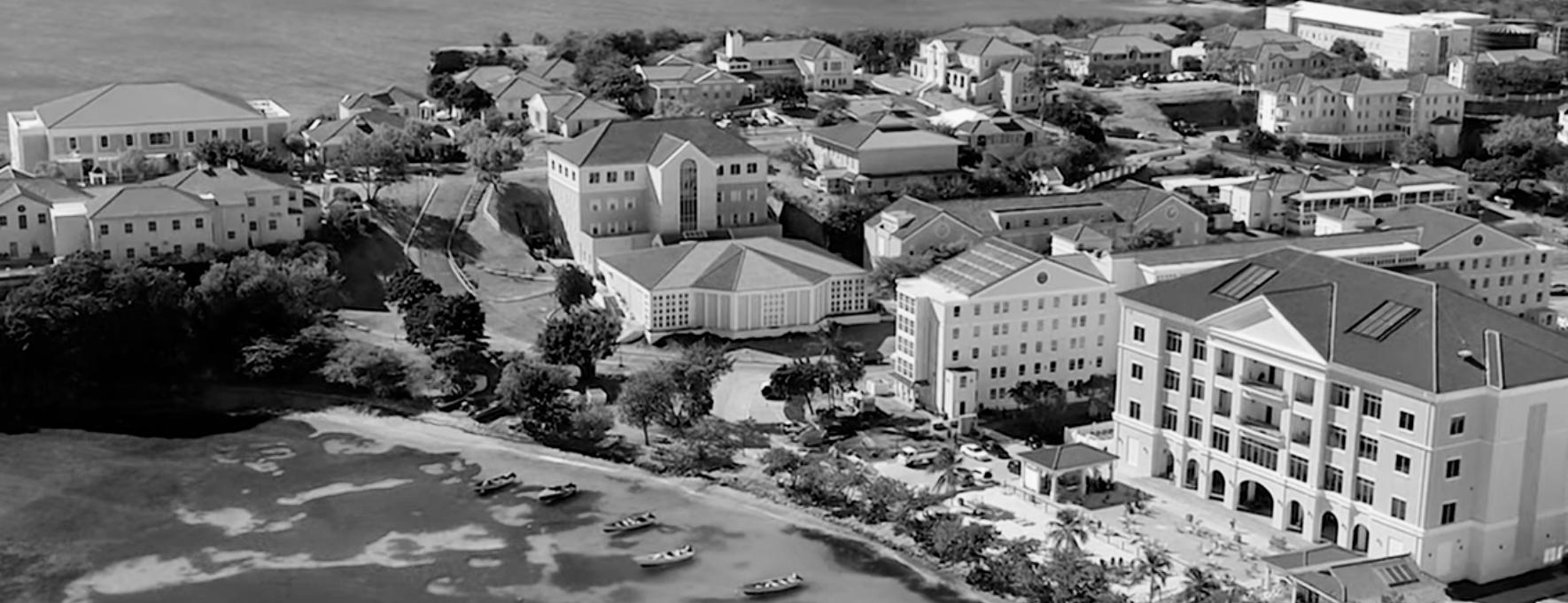
required courses.
“We wanted to partner for a couple of reasons. One of the things that SGU has is that they are able to maintain their accreditation without requiring an MCAT score or a standardized test,” said Richelle Monaghan, the vice dean of the faculty of science and a health sciences and biology professor at Laurier. The main reason for this partnership was to close the gap of Canadian and international students interested in medicine, but who are not eligible to apply to Canadian medical schools.
At the Northern Ontario School of Medicine University in Thunder Bay, the entering class of 2024 only had 88 seats available.
From 2019 to 2020, only 117 offers were made to students who applied to the Memorial University of Newfoundland’s Faculty of Medicine.
SGU has an estimated admission rate of 56 per cent, but the university has not posted a concrete total.Laurier students are also granted scholarships based on their GPA while enrolling in this pathway.
Students who are accepted into the program and obtain the required overall GPA and sciences GPA will receive a scholarship of $85,000 to the SGU School of Medicine.
“Qualified candidates are eligible to be considered for
additional SGU scholarships,” said Monaghan. “They can be stacked, such as the Chancellor’s Circle Legacy of Excellent, currently valued at $120,000 US.”
Students can complete the basic science component of SGU’s MD program through two years of study at the Grenada campus or one year at Northumbria University in the United Kingdom and one year in Grenada.
Students in the program can complete their clinical rotations in the U.K. “Several healthcare systems benefit from it as well. However, it’s a positive experience to work in different nations and gain a taste of the various healthcare systems in the U.S., Canada or
the U.K. when conducting clinical rotations,” said Monaghan.
She also explained how she has personally experienced watching high-performing students wish to get into medical school, but not have the patience to wait to get into a Canadian medical school.
“When we look at in the Canadian scenario of over 47,000 applications to medical schools in a year for less than 3,000 seats, there’s a high, high demand,” said Monaghan.
“Our health sciences program is very successful at helping our graduates get into Canadian medical schools, but still there’s a lot of students who are interested in in practicing medicine and they just don’t have an opportunity.”
When asked about the program, students from Health Occupation Students’ Association Laurier (HOSA) were excited about the possibility of going.
“I think it’s great, honestly. I understand how difficult it is getting into med school in Canada, so this kind of helps bridge the gap,” said Malaika Jafri, one of the HOSA co-presidents and a fourth-year health sciences student at Laurier.
“I think my main concern for this is match rates comparing to Caribbean med school, but I think most Canadians that apply and do this will likely to have strong stats.”
Puzzle 1 Puzzle 2
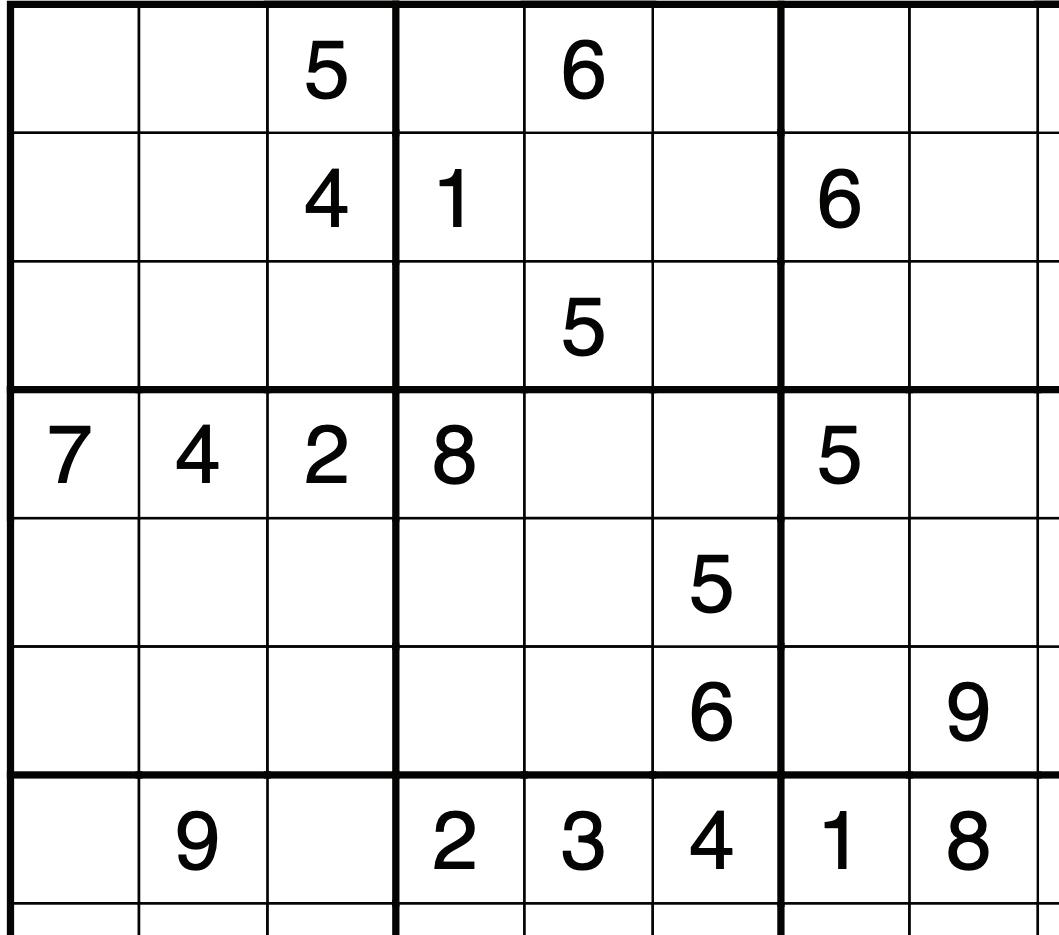



Puzzle 3 Puzzle 4


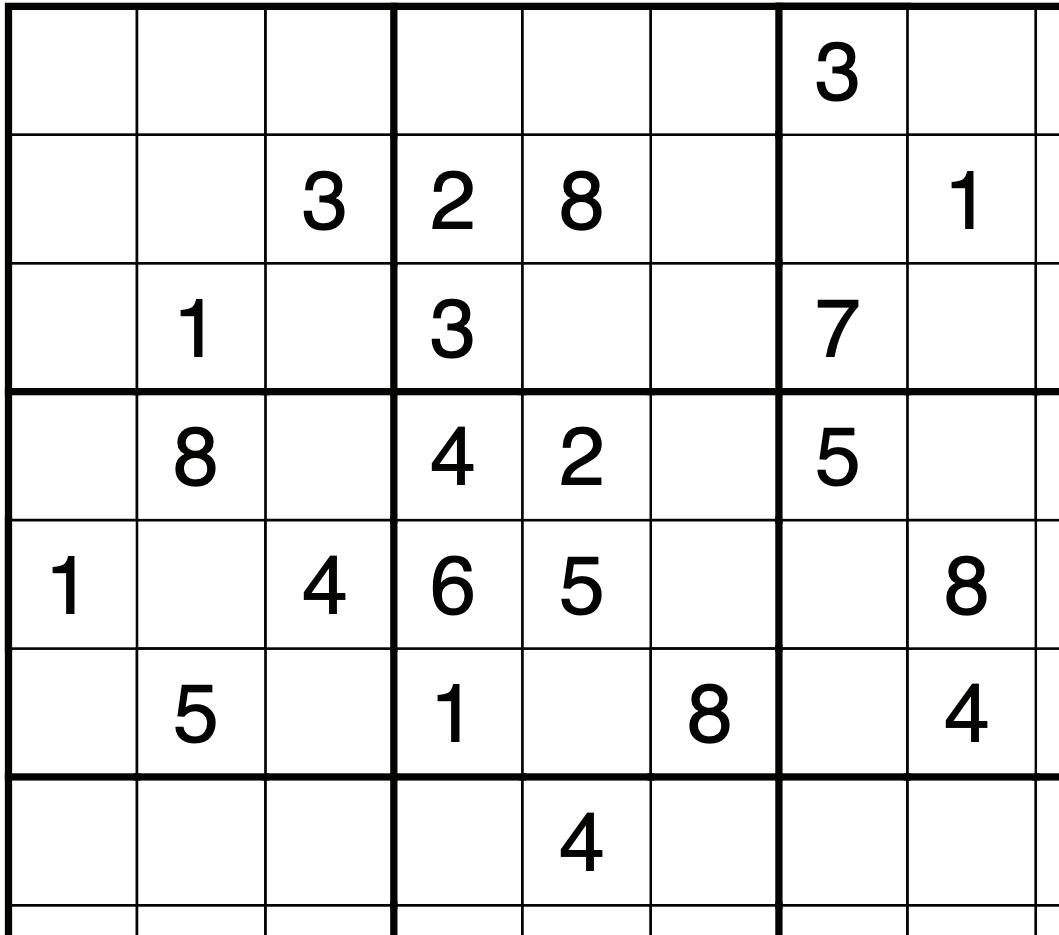

Solutions 1 2 3 4


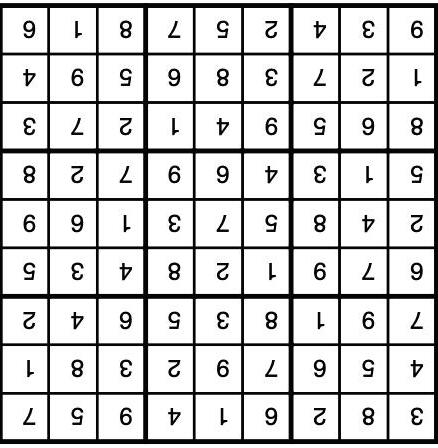

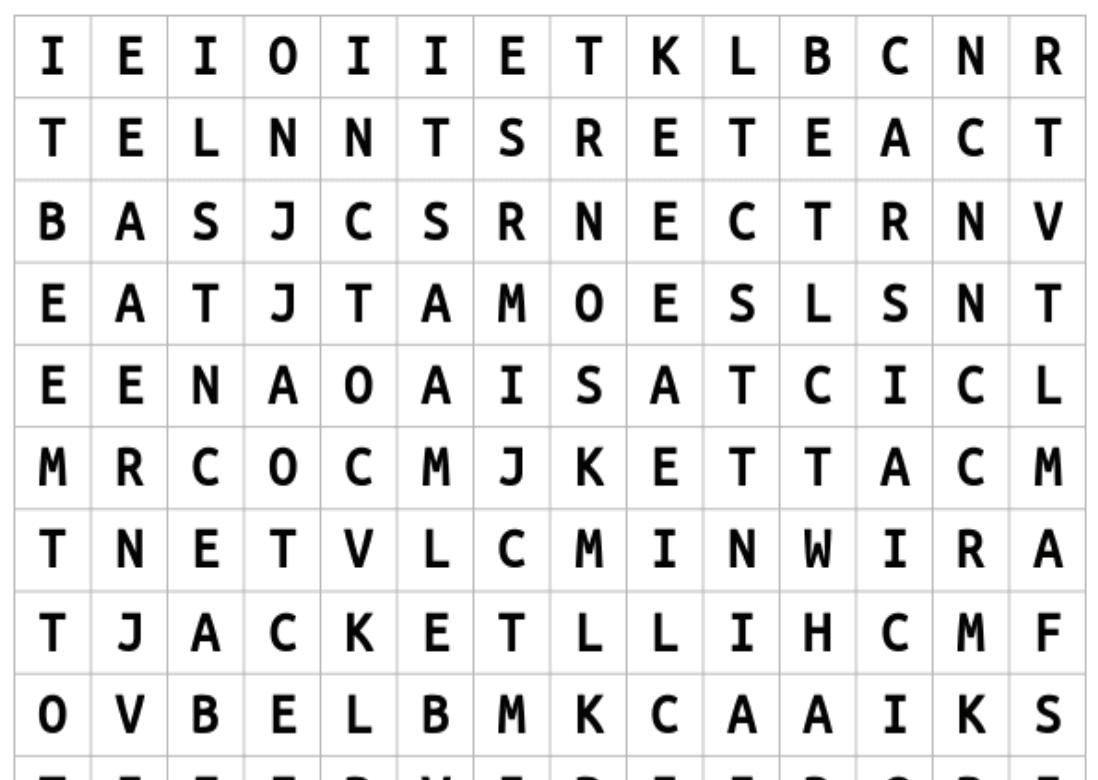

• Snow
• Chill
• November
• Jacket
• Scarf
• Hat
• Mittens
• Remembrance
• Tea
Dear Life is your opportunity to write a letter to life, allowing you to vent your anger with life’s little frustrations in a completely public form. All submissions to Dear Life are anonymous, should be no longer than 100 words and must be addressed to your life. Submissions will be minimally edited for grammar, spelling or punctuation. All submissions must be sent to the QR code by November 22 to be featured in our December issue.

Dear Life,
I’m so, so happy that it’s fall! I feel like everything good in life hap- pens in the fall and it’s my favourite time of year.
Dear Life, Fourth year is so much fun, I never want it to end #goldenhawk.
Dear Life, You are so, so confusing, but I love you. Help a girl out.
Dear Life,
I’ve lived with my roommates for four years now and we’re parting ways soon. I genuinely do not know how to do life without them. I love you guys.
Dear Life,
I’m enjoying the rainy, cold weather! I feel like anyone who says they genuinely love the summer weather and wish it could be around all year long is lying.
Aries (March 21 — April 19)
November brings about lots of social commitments and responsibilities. Make sure to take time for yourself, connect with nature and treat yourself often to avoid extending yourself too thin.
Gemini (May 21 — June 21)
is term, take a moment to slow down. Life is fast, but the slow moments can de ne it. Never underestimate unplugging, winding down or taking a moment to capture the essence of your current situation.
Leo (July 23 — Aug. 22)
Your plans for this term involve taking on more exhilarating challenges that will create refreshing formative experiences. Try out the local rock climbing facility.
Libra (Sept. 22 — Oct. 23)
is term, consider job openings on campus. Check out the online job postings portal and avoid lengthy commutes while making friends at the same time!
Sagittarius (Nov. 22 — Dec. 21)
Take time to spread the love in your community, do something for someone you don’t know and allow the ripple e ect to take care of the rest. Remember to take care of each other.
Aquarius (Jan. 20 — Feb. 18)
Create a space on campus for like-minded individuals to share mutual experiences and bring together avid hobbyists. Create movement within your community and let communal spaces be your go-to this term.
Taurus (April 20 — May 20)
is term will bring about fun times with unfamiliar faces that can turn out to be some of the most important people in your life. Attend headphone disco and other on-campus activities and stay safe.
Cancer (June 22 — July 22)
is autumn, embrace the change of seasons! Go out- doors and enjoy nature’s changing color gradient and that familiar smell in the air. Reconnect with the cool environment to let out all the steam!
Virgo (Aug. 23 — Sept. 22)
is term will bring new avenues you haven’t explored before, try something new and see where it takes you! Stray away from complacency and let your heart guide you as you make the most of being a Golden Hawk!
Scorpio (Oct. 24 — Nov. 21)
is term, the grass is greener where you water it. Take care of yourself and be mindful of your well-being, especially as exam season rolls around. Rest is the key to success!
Capricorn (Dec. 22 — Jan. 19)
is term, try new accountability measures! Clearly visualize your goals, embrace the baby steps and slowly materialize your ideal outcome. Try journaling.
Pisces (Feb. 19 — March 20)
Let this term be your season of “yes”. Keep an open mind and get out of your comfort zone to make some new core memories! Say yes to things you want to do – and those that intimidate you.

EDITOR-IN-CHIEF
According to the Canadian Psychological Association, seasonal affective disorder (SAD), makes up 10 per cent of all reported cases of depression in Canada.
This disorder is believed to be influenced by lack of sunlight.
As the “fall back” in November causes us to adjust our schedules and arrive home after the sun has set, it’s natural to feel the lack of sunlight in your life.
In my last full term at Wilfrid Laurier University, I suffered greatly due to the lack of sunlight I was getting each day.
I would spend my full day in class and in the halls of Laurier, then go home and hole up in my room to write papers.
Needless to say, this made my mental health spiral.
Pair it with a breakup, and it was the perfect storm for what I call “the blunder months” of my university experience.
This experience, combined with the lack of sunlight, made me realize that I was suffering from SAD.
After a midnight googling session spurred by my inability to continue keeping up with my workload.
SAD can present in a number of ways, but according to the National Institute of Mental Health, the following are usually present: empty/ sad mood for at least two weeks, feelings of hopelessness, fatigue, loss of pleasure in activities, difficulty concentrating, unplanned weight changes and suicidal thoughts.
Of these, I exhibited every symptom.
While not every individual will experience the same symptoms, SAD is characterized specifically by a four-to-five-month window where the symptoms are present.
If the symptoms carry on past that threshold, you might have depression.
But how do you prevent and manage symptoms of SAD?
One way is by using light therapy
CHAIR Umaymah Suhail
VICE-CHAIR Jacob Segal Rice
COMMUNITY DIRECTOR Shelby Blackley
COMMUNITY DIRECTOR Brittany Kovacs
COMMUNITY DIRECTOR Andreas Patsiaouros
(or phototherapy).
This involves sitting in front of a light source that mimics daylight to produce brain chemicals that help improve your mood.
While these lamps can be purchased online, they can also be found at local libraries — the Waterloo Public Library’s main branch has one that can be used by visitors.
A second form of treatment is talk therapy, specifically utilizing cognitive behavioural therapy.
This form of therapy encourages individuals to work through unproductive thoughts, learning to reframe them in ways that help them problem-solve on the spot rather than ruminate.
Finally, individuals may choose to utilize medication to cope with the psychological impacts of SAD.
Antidepressants such as Wellbutrin can help alleviate symptoms.
Of these treatments for SAD, the most effective for me has been taking antidepressants — though the other forms of treatment have also been beneficial.
While taking medication can help, I have found that it is most effective when combined with talk and light therapy.
It also cannot be disregarded that taking the time for self-care in its many forms can help with symptoms of SAD.
After the term where I struggled the most with it, I learned the hard way to prioritize self-care for myself to keep the symptoms at bay in the future.
On the Waterloo campus, there are numerous resources available, including the Accessible Learning Centre, which personally helped me through the term where I suffered the most from SAD.
Without the resources provided by the centre, I would not have had the mental strength to finish my last full term at Laurier.
As we move towards the holidays and your schedule becomes more chaotic, don’t forget to reach out to your support systems at home and on campus to help adjust to the seasonal time change and the impact SAD has on your life.
Admitting that you need help does not make you a failure, as difficult as it can be to accept.
THE CORD IS PUBLISHED BY WILFRID LAURIER UNIVERSITY STUDENT PUBLICATIONS 205 REGINA ST. N., WATERLOO
WLUSP ADMINISTRATION
BOARD OF DIRECTORS
STUDENT DIRECTOR Elisha Felician
STUDENT DIRECTOR Madalyn Mostacci
TREASURER Tusharika Tyagi


This conversation is a popular topic between my friends and I — the debate of when we should have our life together.
It seems as if the number we unanimously decide on as the grown-up age gets older and older as we approach it ourselves.
In high school, it was agreed that 18 would be the age where you should be a proper grown-up.
However, as high school came to an end, we deemed 22 as the magic number. Now that I and many of my peers have celebrated our 21st birthdays, 26 is the new idealistic digit that represents our peak maturity.
In Canada, the age of majority is 18 in six provinces, Ontario being one of them, and 19 in the remaining four as well as the three territories.
While our legislation deems those ages as being grown-up, is that true?
income.
Odds are that many of you reading this right now are over the age of 19 and do not fit the previously stated description of a grown-up.
According to Statistics Canada, there has been an increase of young adults aged 20 to 34 living with relatives other than parents or non-relatives, such as friends or roommates.
Additionally, in 2021, 35.1 per cent of young adults lived with at least one parent.
In our own country, a good chunk of the grown-up aged population does not adhere to typical definitions of being grown-up.
We cannot look solely at housing statistics or other social constructs to determine what a grown-up age can be — we can, however, turn to our biological make-up.
Looking at our brain chemistry to pinpoint when the brain reaches complete development could narrow down a grown-up age that is not the age of majority our government and society has decided for us.
White matter, on the other hand, allows communication and information to exchange to different areas of the brain.
This change in our brain occurs from the start of adolescence all the way through our 20s and allows us to make better decisions overall.
With this being said, we could define the grown-up age as whenever our brain is finished reducing gray matter and has increased white matter — but that would vary from person to person.
This is not the only change our brain goes through throughout our lives, as other factors such as cognitive development can impact our maturity.
However, development also changes depending on the person. Therefore, we cannot turn to science to provide us with a grown-up age.
Could it be that there is no defining answer to this question?
The way I look at it, maturity and being a grown-up comes in waves, and we ride that wave for the rest of our lives.
FINANCE MANAGER Randy Moore randy@pv3tax.com
SECRETARY Nate Dawes PRESIDENT Umaymah Suhail president@wlusp.com
EXECUTIVE DIRECTOR Kurtis Rideout ed@wlusp.com
HR MANAGER Makenzie Worton hr@wlusp.com
ADVERTISING MANAGER Ayden Elworthy ads@wlusp.com
Independence is undoubtedly a defining feature of being grownup. When we picture an individual who has reached maturity, they are financially self-sufficient. This may include a stable job, a home of their own as well as other personal assets, such as a car or disposable
In a TedTalk by scientist Shannon Odell, she explains that brain development follows two trajectories: A reduction in gray matter and an increase of white matter.
In layman’s terms, gray matter is an essential tissue that is important for memory, motion and movement.
When the gray matter reduces as we get older, our brain keeps useful connections while getting rid of unused ones.
At 25, some may feel mature and settled into their lives, until 35 rolls around and you are back on the naive end of the wave feeling like a lost kid again.
Do I think we should view 18 and 19-year-olds as grown up just because legislation says so? No. I also don’t think we should place any real emphasis on a specific age as being the grown-up age, because it will happen when it happens.


HARLEEN KAUR DHILLON TCE EDITOR-IN-CHIEF
Rivers in Rock is Kenneth Hewitt's gorgeous homage to the beauty of Elora Gorge. Hewitt begins with an overview of the origin story of the gorge--from its barrier reef origins below the equator to the scarce traces left by Indigenous peoples in the area to the modern town around it.
The book is both a field companion and an overview of the natural history of the gorge.
As we follow the development of the gorge, we also embark on a journey of learning about geological history of our small piece of Southern Ontario.
Before delving into the history, however, Hewitt maps out three viewpoints and three excursions along the gorge and the Grand River.
These are accompanied with diagrams, maps and reference photos.
He also provides extensive descriptions of the geological and visual marvels to be found at each of the sites along the excursion.
In my opinion, Hewitt understands his audience well--throughout the excursions, he points out important locations to see the gorge's features, but also where to have the best chance of finding fossils. I did not find any.
I and my photographer decided to make the trip out to the gorge and go on one of the excursions mapped in the book.
We attempted Excursion 2, which goes from the Upper Grand Gorge to Middle Bridge.
While the excursions are wellplanned, we had a hard time following them when we made the trip out to the gorge.
The maps lack many landmarks, including only basic street names
and a scale.
This made it difficult to locate ourselves in reference to the maps and we found ourselves having to cross-reference the maps in the book to Google maps, which was an inefficient process.
Hewitt maps the beginnings of the gorge in a large barrier reef formed during the Silurian period, whence the limestone bedrock originates.
He then traces the second age of the gorge, the gradual "Great Journey" from the tropics to Southern Ontario due to tectonic activity deep under the landscape.
It is in the third age defined by the end of the Quaternary Ice Age that the gorge singularly begins to develop. The formation of the gorge is defined by the Laurentide Ice Sheet and the interactions of multiple glacial lobes and phenomena on the emerging Ontario Island--an ice-free area revealing the land underneath the ice.
Detailed maps are included throughout the book showing the relationships of different factors influencing the gorge.
Here, Hewitt features vivid descriptions of how the landscape would have differed during the Ice Age in Southern Ontario.
As he does throughout the book, he provides reference photos and diagrams to aid in the readers' visualization of the different forms the gorge has taken.
The fourth age of the gorge was the Primordial Forest, where trees and animals became more influential. Hewitt specifically mentions the work of the beavers and its influence on the rivers.
Finally, we move into the present. Hewitt recognizes that Indigenous people were present in the area from at least 500 CE, but left few traces behind. This is juxtaposed with the overwhelming influence of European settlers who, in around 200 years, significantly altered the gorge and its surrounding areas.
For example, abandoned farms,
warehouses and other buildings can be found throughout the gorge. A large portion of the trees are much younger, since the older trees were taken for the furniture industry and the gorge only recovered its greenery in the 20th century during the Great Depression and following the world wars.
Hewitt does a fantastic job of weaving Elora into a larger narrative and reigniting an awe of our surrounding landscape in the reader.
Hewitt provides a vivid sense of the palimpsest that is our current landscape, tying our niche of the world into a grander global, geological and chronological scale.
At the same time, he provides valuable insight into the local history of Elora, especially highlighting the role of schoolteacher David Boyle in understanding the geology of Elora.
Hewitt is a professor emeritus of geography from Wilfrid Laurier University.
The concise and direct descriptions also indicate an in-depth understanding of the concepts described in the book, including a small glossary at the back for terms that may not be familiar to all readers.
However, in the conciseness of the descriptions, important context is sometimes hidden because Hewitt has more knowledge of foundational concepts in geography than the average reader.
Especially when two definitions reference each other, it can become difficult to understand the concepts presented without doing outside research.
Rivers in Rock is informational as well as inspirational. It inspires readers to learn more about our own geography and history, as well as see the wonders that surround us.
Hewitt's passion and love for his field shines through in his writing-we were excited to visit the gorge because he was so excited to show us.


“They are noble in raising the educational level of the Palestinians and helping them come here to continue their education so they can go back in the future and change the educational system back home.
- Hiba Abu Kamal, a Palestinian student at McGill University and participant in the PSSAR program.
“A Canadian non-profit or- ganization called Palestine Students and Scholars At Risk (PSSAR) is helping Palestinian students and scholars worldwide pursue opportunitiespost-secondary in Canada.
The organization was es- tablished in 2024 by profes- sionals and academics after six months of military assault from Israel where at least 60 per cent of educational fa- cilities, including 13 public libraries, were damaged or destroyed and at least 625,000 students were left without an academic institution to attend.
Hiba Abu Kamal, a Palestinian student who participated in the PSSAR program and was accepted into the urban planning program at McGill University, said the organiza- tion offered her programs that helped connect students in Gaza with professors in Cana- da.
The organization also helped her submit her university and student visa applications.
Ayman Oweida, a professor from the faculty of medicine and health sciences at McGill University and director of PS- SAR, explained how the appli- cation process works in their organization.
Students from Palestine fill out an application form and upload their cover letter, tran- scripts, and a recording of their field of study and English pro-
ficiency to the PSSAR website.
After receiving the applica- tion, the organization will use their database to match students with different university professors across Canada and ask if the professors are inter- ested in hosting a student.
If they find a match, PSSAR will arrange an interview.
Then, a volunteer from the organization (often Canadi- an-Palestinian students) will fill out a university admission application for the Palestinian student since there is no stable internet connection in Gaza.
Once a student gets accept- ed, PSSAR will work with the student to complete their visa with the Canadian government.
“We saw PSSAR as an op- portunity for students in Gaza who want to pursue higher education outside of Gaza,” said Oweida.
“This is an opportunity to bring great minds here, where they not only receive an edu- cation but have opportunities to give back to Palestinian society in various ways.”
One of the main hurdles to coming to Canada through the PSSAR program is the war zones.
The border is completely blocked off and the citizens in Gaza cannot leave.
Oweida hopes that the bor- der will open one day and stu- dents in Gaza can flee to Egypt, where they can apply for a visa through a Canadian embassy.
To rectify this, PSSAR com- municated with the minister of immigration in Canada, mak- ing visa processing faster for students supported by PSSAR.
Another significant hurdle for the Palestinian students who arrive in Canada is their lack of possessions and fam- ilies they can contact here to receive support and resources.
This is a significant challenge for PSSAR due to their limited resources. They are using most of their funds to help Palestin- ian students enter Canada but hope to receive more support and resources from the Canadian government.
“We are working with an audience that we hope can support community organiza- tions and are willing to sup- port the cause of education. So, we need finances to keep our own,” said Oweida.
Education is a high priority for families residing in Gaza, with 95.4 per cent of children enrolled from elementary to high school.
Despite the high enroll- ment rates at various schools, younger generations, such as young adolescent boys and children with disabilities, are
facing challenges in gaining access to education.
According to the United Na- tions International Children’s Emergency Fund (UNICEF), an agency responsible for providing humanitarian and developmental aid to chil- dren across the globe, it was revealed that by the age of 15, nearly 25 per cent of boys and seven per cent of girls dropped out of school.
In contrast, 22.5 per cent of boys and 30 per cent of girls who are between six to15 years old with a disability never en- rolled in the school system.
The lack of school enrollment is causing the youth unem- ployment rates to reach 40 per cent in the West Bank and 62 per cent in Gaza.
The genocide in Gaza is so severe that close to half a million children require humani- tarian assistance to receive an education.
The conflict and violent ep- isodes in the West Bank, East Jerusalem, the closure of the Gaza Strip and physical access restrictions are causing dai- ly challenges and threats for children attending school in the area.
This war is also causing emo- tional distress, fear and intimidation for children in high-risk locations where they must pass through checkpoints or walk by settlements.

RYTHAM SAHNI/CREATIVE DIRECTOR
On April 18, UN ex- perts expressed grave concern for the attack patterns on universities,schools,teachers and students in the Gaza Strip.
They raised alarms over the destructionsystematic of the Palestinian education sys- tem after 80 per cent of schools in Gaza became damaged or destroyed in what the UN experts called, “scholasticide.”
Scholasticide refers to the systemic oblitera- tion of education sys- tems through the arrest, detention or killing of teachers, students and staff.
It also includes the destruction of institutionalized buildings. Abu Kamal said the genocide not only scared children from attending schools, but also harmed educational systems physically.
“There’s no education there at all now. That’s why it’s a challenge.” said Abu Kamal.
Oweida said that what Israel is doing in Gaza can never be justified and that attacks on schools, hospitals and major institutions are happening for no spe- cific or credible reason.
“What they’re doing is a war crime. It’s a war crime to demolish
schools and hospitals,” said Oweida.
Through initiatives such as the PSSAR, Palestinian students can gain access to education and pursue their careers and ambitions.
“PSSAR has a great working staff. They are determined to help the Palestinian students and give them opportu- nities to continue their education,” said Abu Kamal.
“They are noble in raising the educational level of the Palestinians and helping them come here to continue their education so they can go back in the future and change the edu- cational system back home.”
VACANT
arts@thecord.ca
ANDREW EATON
For this month’s edition of your favourite food review series, we decided to take on a place we’re sure a lot of our readers have been to, but very few have eaten at: Kentucky Bourbon and Barbecue
Located in Uptown Waterloo at 103 King St. N., Kentucky o ers a very enjoyable patio (in the summer months) and some delicious barbeque and pub-style o erings.
During our trip, we took full advantage of said patio, grabbing a nice spot in the sun for some Sunday lunch after showing our school spirit at Homecoming (roll Hawks).
We were starving when we got there, and thus the delectable menu was too much for us to bear and we jumped right into entrees, foregoing fancy drinks and appetizers.
Andrew, keeping up with what is at this point a three-article streak of ordering fried chicken, got the fried chicken sandwich, which was nothing to write home about.
It was a nice and hardy dish with crispy chicken, tangy garlic aioli and all the toppings on a light and u y potato roll. Despite this, nothing made it truly stand out. It resulted in a good meal, but nearly identical to any other fried chicken sandwich you could get around town.
However, it is important to note that the side caesar salad that Andrew got with it had some nice avor and overall added a lot to the meal.
Lizzie got the house salad, which consisted of a spring mix topped with tomatoes, pickled onions, pecans, goat cheese, house vinaigrette and grilled chicken.
It was a great choice: the vinaigrette was delectably sweet, the pickled onions added a nice bite, the pecans gave the salad texture and the goat cheese was melt-inyour-mouth good.
e only complaint about it was the fact that the chicken was disappointing, as it was too dry.
But hey, if you go to most places, the grilled chicken will be a little dry.
When it comes to a ordability, Kentucky is about middle of the road for these types of restaurants, with dishes clocking in around $15 to $20.
It is important to add that on the day we went, Kentucky had graciously volunteered their space to be used for the sorting and disposal of trash during the homecoming clean-up event and even gave the participants a free meal.
A nice gesture by the restaurant that earned them major points in our eyes.
To conclude, Kentucky’s true charm is its social atmosphere.
e big outdoor picnic tables and large portion sizes make it a great place to go with a bunch of your friends for a night out or the morning after. And if you do wind up swinging by, tell them LizzDrew sent you.
Ratings:
Ambiance: 8 out of 10
Food: 7 out of 10
A ordability: 7 out of 10







You might know this dish as the TikTok famous “Gigi Hadid Pasta,” but it has been a staple of Italian cuisine for decades.
From its creamy, cheesy pink sauce to the subtle heat that makes your mouth water, what’s not to like?
Maybe you’ve heard of vodka pasta before or perhaps this article will act as your introduction to the dish — either way, this is your sign to make it.
To prepare this spicy vodka pasta, you’ll need a stove, pot, pan, cutting board, knife, measuring cups, measuring spoons and a stirring utensil (such as a spatula or wooden spoon).
Equipment
To prepare this spicy vodka pasta you’ll need a stove, pot, pan, cutting board, knife, measuring cups, measuring spoons and a stirring utensil (such as a spatula or wooden spoon).
Ingredients
• A bag of pasta, your choice (I recommend rigatoni or penne)
• Butter

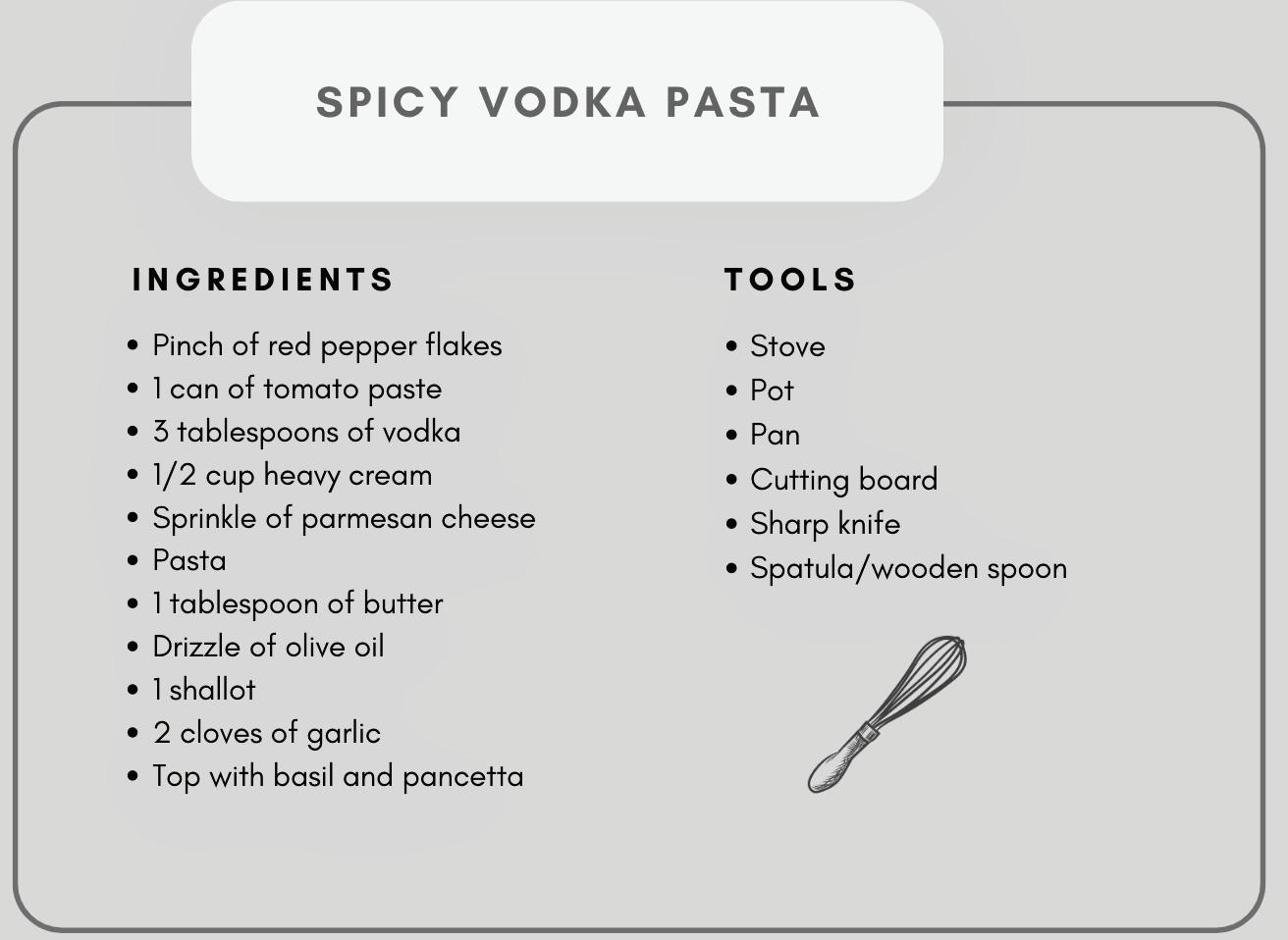
• Olive oil
• Shallot
• Garlic
• Red pepper akes
• Tomato paste
• Vodka
• Heavy cream
• Parmesan cheese
• Pancetta (optional)
Start by bringing a pot of water to a boil, salting the water and adding your pasta.
Cook until al dente or until fully cooked but still rm (about 10 to 12 minutes).
When you drain the pasta, put a cup of pasta water to the side for later.
Now onto the sauce. For added avour, start by chopping up some pancetta and cooking it in your pan until it starts to brown.
ere’s no need to add oil, as the meat is fatty enough that it will naturally crisp up when fried.
Remove the pancetta from your pan and set it aside on a paper towel lined plate.
If you don’t eat meat or feel like saving 10 minutes, feel free to skip this step.
Next, nely dice a single shallot (substitute with half of a yellow onion if needed) and two cloves of garlic. If you’re using store-bought minced garlic, you’ll need about

one teaspoon. Using the leftover grease in your pan, cook your garlic and shallot. If you skipped the rst step, add about one tablespoon of butter and a drizzle of olive oil to a hot pan rst. Sauté for two to three minutes, then add a pinch of red pepper akes and an entire can of tomato paste (about 6oz).
If you’re like me and love spicy food, you can add a little more than a pinch; I do a half teaspoon. Stir to combine and let it sit for a few minutes, then add three tablespoons of vodka.
Allow the alcohol to cook out, then turn o the heat.
Add half a cup of heavy cream, plus half a cup of grated parmesan and a few spoonfuls of pasta water. e goal is to have a perfectly pink sauce, not too light but not red either.
Top with fresh basil, extra parmesan cheese and crispy pancetta. is recipe is quick, simple and absolutely delicious.
Consider hosting an Italian-themed dinner party with your girlfriends or cooking a homemade meal for your partner.
If you have some leftover vodka from last weekend, skip the shots and get cooking.

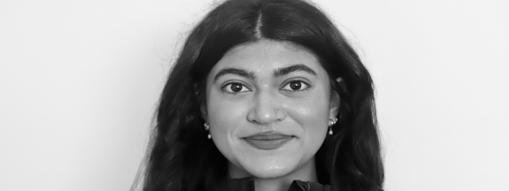
It has been a long two-year wait for Tolkien fans, but Amazon has richly rewarded them for their patience.
The Rings of Power is a prequel to the events of Peter Jackson’s The Lord of the Rings adaptation, despite there being little source material from J.R.R. Tolkien’s works. Premiering in September 2022, the show has amassed more than 150 million global viewers, according to Jennifer Salke, the head of Amazon studios. Each season consists of eight gripping episodes.
The series weaves multiple storylines together featuring various men, elves, dwarves and hobbits. While season 1 focuses on the dying tree of Lindon and the identity of The Stranger (Daniel Weyman), season 2 takes a heavier tone.
Both Númenóreans and Southlanders must face the aftermath of the battle with Adar’s (Sam Hazeldine) orcs while Nori (Markella Kavenagh) and The Stranger go on a quest to find where The Stranger belongs while unknowingly putting a target on their backs.
The cast of The Rings of Power do a captivating job of translating Tolkien’s world to screen, though not without controversy.
Morfydd Clark’s casting as Galadriel (famously played by Cate Blanchett in Jackson’s Lord of the Rings), as well as the character’s overall portrayal has been a
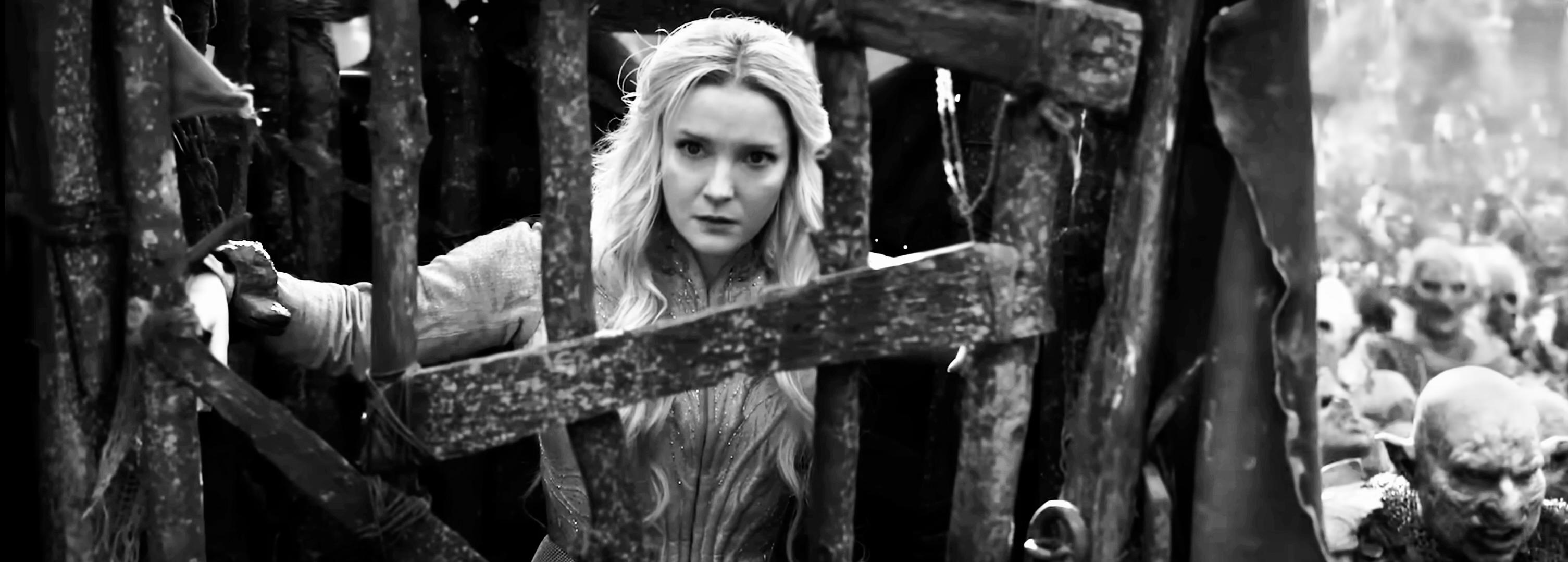
point of contention for the Tolkien fandom.
Some critics have argued that what The Rings of Power lacks is the ethereal presence that Jackson’s elves brought to the world. Clark’s Galadriel is the antithesis of Blanchett’s Galadriel – and many viewers struggle to reconcile that this is the same character we know and adore from Jackson’s films.
On the other hand, Annatar/ Sauron (Charlie Vickers) has the same ethereal grace that Jackson’s elves have.
With complex culture and relationships, there is rich storytelling in the portrayal of the dwarves.
The complex relationship between King Durin III (Peter Mullan) and his son, Durin IV (Owain Arthur), was one of the most compelling.
My favourite performance of the series has been Sophia Nomvete’s
Disa, who thankfully gets more screen time this season.
Her delivery, comedic timing and micro expressions are a masterclass in turning a supporting dwarven character into an immediate fan favourite.
Another of my favourite performances is Cynthia Addai-Robinson’s portrayal of Miriel. Having lost her vision in season 1, Miriel now grapples with declaring her claim to the throne of Númenor while fending off her cousin Pharazon (Trystan Gravelle).
Miriel’s nobility in the face of adversity creates a powerful storyline that Addai-Robinson delivers beautifully.
Unburdened by the constraints of a film’s running time, the series has had the unique ability to experiment with genre.
This new spin on Tolkien’s universe feels grittier, with higher

The Winnipeg-born special effects artist, writer and director Steven Kostanski wants to freak you out with his and his team’s newest project, Frankie Freako (released in theatres on Oct. 4) — and he knows exactly how to do it.
Kostanski is a veteran of freaky prosthetic wounds and fake goo, famous for his work on several popular films and shows including Star Trek: Discovery (2017), Hannibal (2013) and IT (2017).
He also directed Manborg (2011), The Void (2016) and Psycho Goreman (2020).
Kostanski’s specialty is producing zany practical effects and indie films shot in the style of campy horror-sometimes-comedies.
Think Ghoulies (1984), Little Monsters (1989), Troll 2 (1990) or Basket Case (1982). If that sounds like your can of Fart Soda, then Frankie Freako is 80 minutes of hammy fun.
The story follows hapless square Conor (performed phenomenally
by Conor Sweeney) as his placid yuppie lifestyle is upended by insecurity.
He’s cajoled into shredding “tweaked” documents after existentially failing to present a quarterly meeting by his doofy manager Mr. Buechler (played by Kostanski-film-alumni Adam Brooks).
Following this, Conor is subsequently abandoned for the weekend by his beloved gun wife Kristina (the talented Kristy Wordsworth).
Facing two lonely days of daytime TV and guarding Kristina’s statues, Conor fixates on a sleazy commercial for a party hotline run by a thumb-looking goblin named Frankie Freako. Frankie’s hog-era leather jacket and elegant face spikes overpower little Conor into calling the hotline, and it changes his life—and house—forever.
Kostanski’s films feel, both technically and emotionally, as if he ripped them straight from the late 1980s.
The film resolution is nostalgically soft, the sound effects are crisp and the set design evokes the blondie-epoch of upper-middle class Canada.
No detail is spared from the dirty ballet slipper walls, gaudy mantlepiece portrait and the
glycerin dripping liberally off the puppet’s creased grins.
Kostanki’s work is fueled by a deep love for horror and the practical effects that came to define it in his childhood.
Each strange frame is affectionately filled with with referential details (like a “gremlin” in the driveway) and sight jokes (like a perfectly mismatched stunt wig or pizza nailed to a wall) that vividly evoke the Gremlins (1984) and Dead Alive (1992) era of freaky puppetry and magically tactile practical effects.
This passion and intimate knowledge of his source material allows Kostanski to stand on the shoulders of giants when messing with typical genre conventions. Frankie Freako is going to freak you out, but not in the ways you’ll expect.
Freako has so much confidence in its wild premise and rapturously gonzo energy that it transcends the need to unthinkingly import every 1980s film trope.
A refreshing self-awareness permeates the script and the characters performing it, and the dialogue is spoken with a hokey frankness that winks at the audience, explicitly signaling Kostanski and his crew’s production ethos: “Remem-
stakes and a surprising amount of jump scares.
The horror elements have easily become one of my favourite aspects of the show.
When it comes to the score, there is no mistaking that the first season’s was phenomenal. The second season’s score, though more subtle, has won me over completely. Filled with epic themes like “Army of Orcs” and “Forgiveness Takes an Age”, this season’s score is the perfect accompaniment to this new edition of Tolkien’s world.
Bear McCreary’s “The Sun Yet Shines” perfectly encapsulates the show’s themes. Then again, I would expect no less from Bear McCreary. My one complaint is that I wish Nomvet’s Disa had more dwarven mountain hymns.
While the costumes have improved since season 1, I would have liked to have seen more
dynamic costume pieces. Last season, we saw Númenóreans don rich turquoises, browns and creams juxtaposed with flat-looking materials.
The original costumes seen in The Lord of the Rings were fully functional and included layers, but the series’ season 1 costumes lacked dimension and authenticity. However, there has been a change to the Númenórean colour palette. To me, these new pieces appear to be inspired by ancient Rome but have deeper and cooler tones. Reds, greys and gold all make an appearance in the Númenórean wardrobe.
The Rings of Power richly rewards Tolkien fans for their patience. It is a must-see, and I can’t wait to watch how these new chapters of Middle-earth unfold in season 3.

ber this stuff? We do, we love it and we want you to love it too!”
Visual and auditory details, like the tasty click of a tape cassette button or Mr. Buechler’s rat tail and goon sweater, visually link the past with the present.
Even though the film is canonically set in the 1980s, the pace and focus on the inner world of the story fold the setting into a shape where silly fun can be had.
Having absurd, balls-to-the-wall fun is what Kostanski and Frankie Freako are all about.
Go into this horror comedy with an open heart and a greasy pizza while you brace for light gore and a euphorically bizarre ending that will leave you saying “Shaba doo, Freakos.”
Glimpses of deviance from previous Regan-era puppet horror, like President Munch’s taste in concubines and an egalitarian frankness about sex, feel natural and unremarked upon as they allow Kostanski more time to pour steamy puppet goo directly into our retinas.
OPINION EDITOR
ABIGAIL DOMBROVSKY
opinion@thecord.ca

I have never been a big fan of fall. For as long as I can remember, I’ve dreaded it. While some welcome the leaves changing colour, pumpkin spice lattes and colder weather — I miss summer.
It’s not just that I don’t like fall. I’m on the opposite end of the spectrum of fall lovers as a spring lover. Spring o ers a lot of the same bene ts of fall, but with an anticipation of warmer weather, not colder.
Spring also means baby animals, the sun’s return and growing excitement for summer. I love being outside, so every year I can’t wait for the snow to melt and the grass to take over. However, this week something strange happened to me. I was sitting on the GO train heading to my partner’s place in Toronto, when I realized I was fondly looking at the fall landscape. I have 22 years of experience as a fall hater and now, I suddenly nd myself in love with it. Am I getting more boring in my
old age? I don’t mean to o end any fall fans, but it’s not the most exciting season.
Maybe it’s because I nally nished Gilmore Girls. As the days get colder, I have been able to stay inside, cozy, while yelling at my TV about what a terrible father and boyfriend Christopher is (you know I’m right).
As I wrack my brain trying to nd a reason for my newfound appreciation for fall, the main di erence between previous years and this year is that I’m not a student anymore. For the rst time in 18 years, I don’t have to go to school.
Don’t get me wrong — while I enjoyed my time as a student, especially at Wilfrid Laurier University, I wouldn’t dare write a whole article in a school newspaper about how much I hate university. While I liked university, I can’t pretend that it wasn’t stressful at times. e more I think about it, the more I realize I didn’t like fall because it meant switching from the summer break to the chaos of a full university schedule.
Maybe you’ve noticed this too, but I always found that the start of the winter term is easier than the start of the fall term, simply because it’s a smaller leap.
In my case, the switch from sum-
mer to fall wasn’t a switch at all. I graduated from Laurier last April and immediately started working full-time as the Station Manager for Radio Laurier. Because of this, my routine barely changed from August to September. Now that I’m working full-time, I don’t have to worry about midterms, I don’t have to buy textbooks and my day ends at 5 p.m.
Having more time and energy to myself means I can nally take the time to appreciate what I’ve been overlooking for so long. In this case, it’s fall. And what’s not to love about fall? e trees are beautiful, the co ee is pumpkiny and I can wear sweaters again. Not to mention, I am able to celebrate a whole holiday dedicated to eating before Halloween takes place on Oct. 31. My birthday also happens to take place during the month of October.
Is this what I’ve been missing the whole time? Now, I didn’t write this just to rub it in that you’re likely still a student and I’m not. I wrote this to try to remind you not to let your stress get in the way of what’s around you.
I spent far too long looking down at my laptop (which I guess I’m doing as I write this), instead of looking at the beautiful seasons

happening outside my window.
As you progress in your program, try to make time to appreciate where you are. You work hard and you deserve to see some nice trees and have a cozy night in occasionally. If you’re worried about what to do after you graduate, at least you know you’ll have more time to appreciate the full slate of activities available during the fall season.

From Lazaridis Hall to the Bricker Academic Building, Wilfrid Laurier University has seen quite a bit of change and improvement since its establishment 112 years ago.
e university’s original purpose was being Canada’s rst ever seminary school intended to train young Lutheran ministers. It started o as one building, a house purchased from a local businessman at the corner of Albert and Bricker streets.
Laurier’s Waterloo campus now boasts seven main educational buildings, eight residence buildings, a library, a dining hall and a handful of administrative buildings.
ese buildings include a variety of Canadian and Ontarian architectural styles from throughout the ages. e original house purchased for the university followed the traditional late Victorian style aesthetic of architecture with some hybrid style elements.
is style used an eclectic jumble of classic Victorian and Gothic traits, with a cross-gable style roof (a roof with two or more sections that intersect together at right angles) and French regency style windows (also known as portefenêtres, which means windowed doors).
Hybrid style, in this case, refers

to a building that doesn’t subscribe to any speci c aesthetic, but rather meshes them into one.
With high-peaked roofs from the Gothic resurgence, the jutted front porch of the classical and the red-bricked walls with an l-shaped design create a cohesive building.
As the campus grew and began to add more buildings, this would transition into a more Beaux-Arts style, tall symmetrical buildings that one would traditionally associate as the university style and seen more in school a liated buildings.
ese buildings often were composed solely of brick, with straight mansard style roofs (known as a French roof, it is characterized by its rectangular at top and sloped sides) and employed a key feature of formal symmetry.
is Beaux-Arts style can also be seen in the rst building Laurier established in Brantford, the Carnegie library building. Here, we can begin to see the same aforementioned aesthetics: the red brick walls, a mansard roof and a tasteful white dome embellishment.
As time went on, Laurier became acquainted with the modern international style, a cubist and rectangular aesthetic with concrete walls, at rooftops and typical split level interior layouts.
e best example of this style shown on campus is the Frank C. Peters Building. We see this through its composition of rectangle-shaped concrete walls, attened roof, split layers and an attractive streamlined structure.
e Martin Luther University College creates a hybrid of this in-
ternational style mixed with hints of old Romanesque, the epitome of mid-century modern architecture.
e building underwent a large renovation in 2018 and the architects, Montgomery Sisam Architects Inc., intended to keep the original essence and exterior of the building while adding a new and modernized edge.
e walls became windows to allow for a light- lled space and the outside boasts a central courtyard.
e most recent building erected at Laurier is the Lazaridis School of Business and Economics designed by Diamond Schmitt Architects.
e central atrium is another example of the international architecture style. Huge, paneled windows cover nearly every inch of the wall, including the grand skylight ceiling.
e glass encased building has a large and spacious feel, with a steel and concrete nishing on the sections of wall absent of glass. While the exterior is at, the building has a clear and expressive ow.
When compared back to Laurier’s humble beginnings, the di erence is unbelievable.
One hundred and twelve years of architecture and renovation gives the campus a complex look lled with its many phases of history walking from building to building.
At Laurier, students ock to class on the same concrete that students walked 100 years ago and will continue to do so for hundreds of years to come. I am thankful to be one of them.

At the start of October, CTV Kitchener, a local television station, closed its doors and is undergoing demolition at 864 King St. W.
e business decisions to lay o , relocate or demolish news stations could worry journalism students, professionals and educators about the industry’s future.
In February, Bell Media ended multiple television newscasts and cut programs after its parent company, Bell Canada Enterprises (BCE) Inc., announced widespread layo s and sold 45 of its 103 regional radio stations.
is job cut is the second major layo at Bell Media since last spring when six per cent of Bell Media jobs got eliminated and nine radio stations sold or closed permanently. As a news division associated with Bell Media, these layo s impacted CTV News and its employees.
e fact that CTV Kitchener had to relocate to a new building for land development while sharing their production building with Virgin Radio and Bounce Radio shows how the news industry is nancially struggling, as budgets
and resources are thinning for the media sector to the point media outlets need to collaborate to support their companies.
Similar cases are also happening in the United States. In 2023, journalism collaborations started to trend and multiple media outlets in the U.S. embraced partnerships due to budget and resource deciencies. ese nancial struggles in the news industry a ected media outlets such as Vice Media, which stopped publishing and laid o hundreds of employees.
CBC also announced that they would be cutting 600 positions last December, while some Canadian journalism schools shut down or paused their programs.
ese negative scenarios also risk scaring away students, educators and professionals from working in the industry.
Since 2008, more than 450 news outlets in Canada have closed, with 60 closures happening in the last two years.
In June 2023, the Government of Canada passed Bill C-18, the Online News Act. is act compels tech companies, such as Meta and Google, to compensate news businesses when their content is available on their platforms.
However, Meta didn’t react positively, leading to their decision to block Canadian media outlets on their platforms. To improve the
news industry, Jennifer Hollett, the executive director at e Walrus, suggested that news outlets diversify their revenue and funding models.
She said media organizations need to innovate and nd audiences where they are spending their time to diversify their revenue sources rather than focusing on one income source, which is through news distribution.
e Walrus, an independent, non-pro t Canadian media organization based in Toronto, raises funds through sponsorships, partnerships and event series while operating an in-house creative agency called e Walrus Lab. is new business model helped e Walrus, but could new business models and expanding income streams be an e cient way to save the news industry?
If CTV Kitchener or other news media outlets follow a similar approach, would they be able to gain better income and stop relying too much on joint partnerships? Or leave a better impression on the journalism industry?
e uncertainties of the current solutions make it di cult to discern whether they will help the journalism industry.
Journalism students, professors, professionals and even the federal government should brainstorm di erent ways to save the journalism industry in Canada.
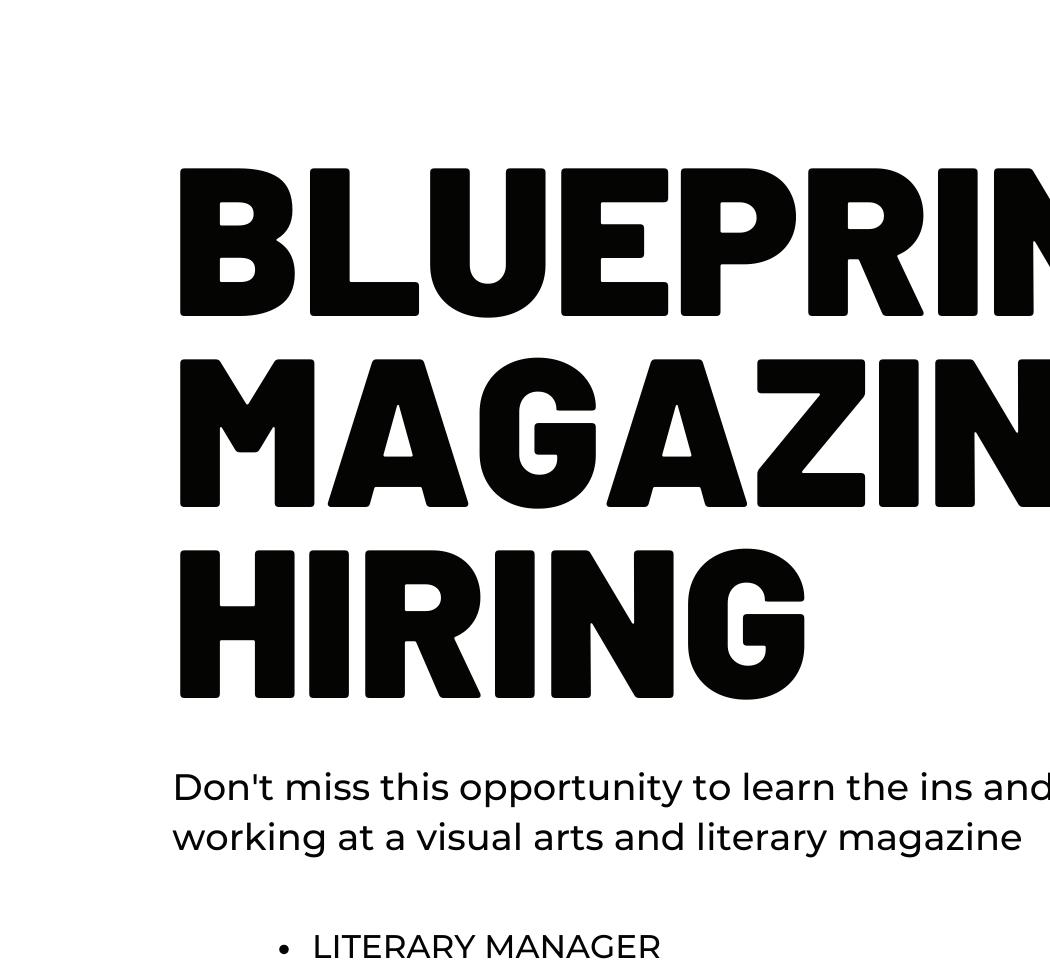





Art is a form of expression that highlights past experiences, ideas, thoughts, emotions and dreams. The beauty of art and creation is the human connection and emotional insight that radiates through it.
The empathy and nuanced interpretations of societal norms demonstrated through art showcase the artist’s biases, unique experiences and ideals. Without human touch, art falls flat as it cannot showcase these complex nuances.
Artists can feel intimidated in a world where generative artificial intelligence (AI) can produce artwork.
The art scene is already challenging, and career opportunities are smaller than for other sectors. The under-appreciation for artists’ crafts can also prove they are easily replaceable.
There have been instances within China’s video game industry of illustrators looking to AI for jobs. The artwork artists craft would take time and effort; however, they come out incredible, but AI produces similar images in less time, saving a company money.
A portion of artists currently facing being replaced by AI is writers.
As seen through the writer’s strike in the United States, the discussions and attempts to use AI have already begun within Hollywood writers’ rooms.
Studios are looking at AI as a tool to speed up the writing processes — however, writers fear AI could take over the writer’s room, leaving some without jobs.
Don’t get me wrong, I believe that AI can help with brainstorming and organizing thoughts. It has

the potential to assist writers.
However, using it to write the first draft of a script would be unauthentic to the writing process because writing is closely associated with self-expression and emotion. AI identifies patterns from existing scripts and creates them based on those present themes and ideas.
There are no original thoughts or nuanced ideas. AI does not portray authentic emotions and experiences but instead uses other artists pieces to create its own work.
I can’t see AI being able to capture the same emotions, liveliness and intention humans do when writing.
As human beings, we understand complex emotion and connection while also being able to relay feelings better because of the direct experiences we face daily. We can capture emotions we have directly faced and experienced with more convection than a robot gathering data from others’ experiences and forming a surface-level depiction of them. There is a level of radiant emotion in art pieces and there is a level of understanding and empathy derived from them. Audiences want to relate and understand the artist’s experiences and thoughts. I feel that the exchange of human ideas and thoughts is the beauty and makes art necessary in order to understand the complex nuances of our emotions. Without human experience behind art, it feels cheap.
Artists are irreplaceable by AI. No computer can compare to the imagination and authentic emotion a human can portray. The beauty of art is someone’s mind working through an emotion, thought or experience and portraying that struggle through their art form. Art comes from the heart and depicts the reality of humanity. Even though they have tried, machines cannot replicate the emotional intention behind human art.
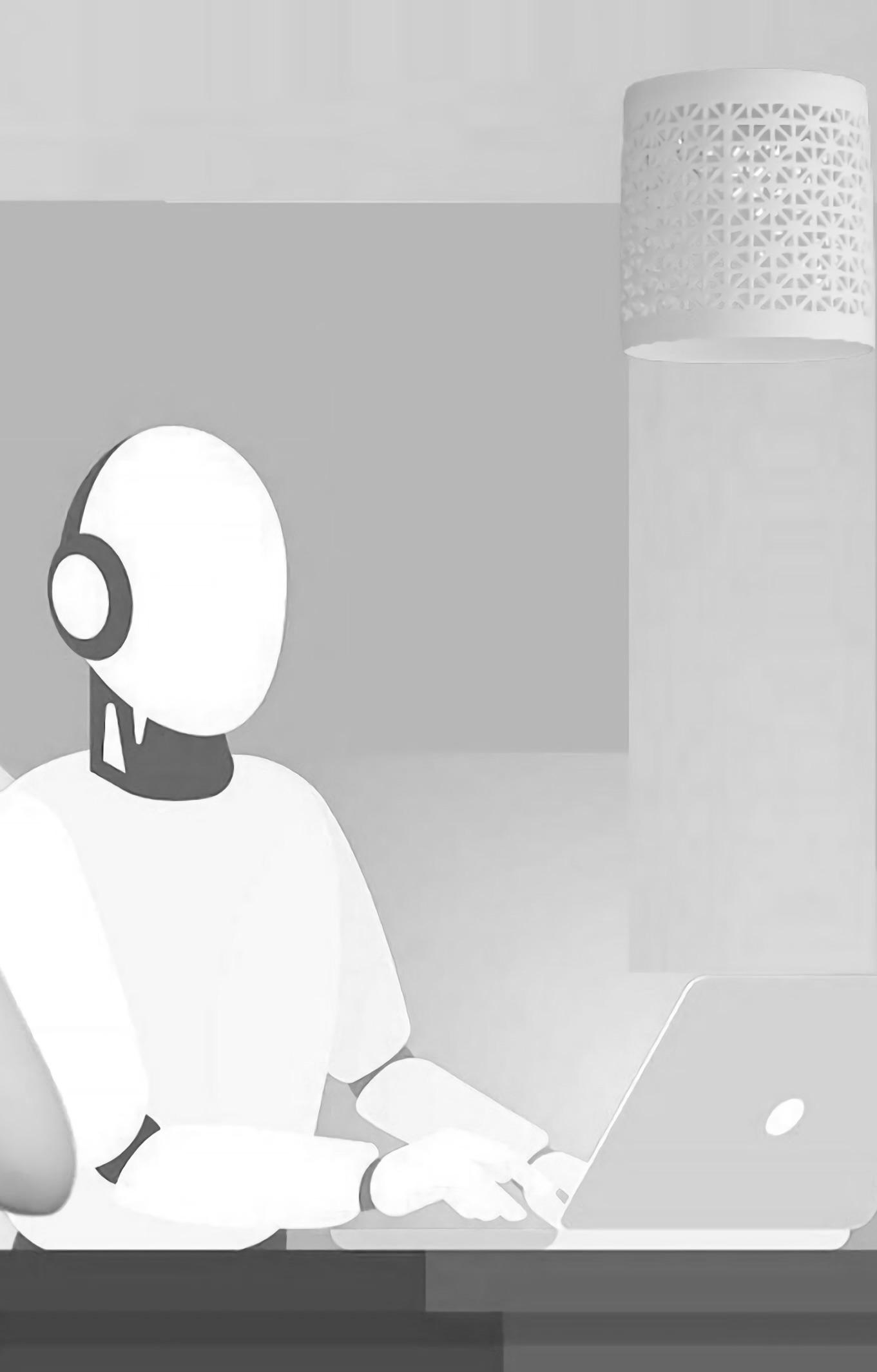


MEN’S SOCCER

The Wilfrid Laurier University men’s soccer team lost to the Western University Mustangs in their game on Oct. 6. The Golden Hawks made a good effort, scoring one goal in the first half but ultimately falling short with a final score of 2-1 in favor of the Mustangs. The team played Western earlier in the week on Oct. 4, where they lost 1-0. First-year business student and midfielder Nathan Dennis reflected on these games.
“I think they were both strong performances, but an unlucky result, so we move on to the next,” he said.
In the first half, the Golden Hawks had good interceptions, which led to first-year global studies student and defender Andrea Chiechi scoring the lone goal for Laurier. Following this goal, Western was still able to maintain possession when passing between their players.
MEN’S HOCKEY
They maintain possession very well. We caught them sleeping on a couple plays, but overall I think it was a good performance.
“The thing is, they like to play direct. They just play a ball overtop and we got to deal with that all the time. I think if we handle it, we’re doing a lot better today,” said men’s soccer head coach Mario Halapir when asked about the team’s performance in the first half. “We’re collapsing through the middle, which has given us the opportunity to actually win the ball and transition through.”.
While the first half went well, the second half was not as strong for the Golden Hawks. After a poor call from the referee and two goals from the Mustangs, frustration grew amongst the players. First-year defender and communications studies student Christo-
pher Vitantonio was ejected from the game in the 74th minute after a questionable call in the opposing box. They deemed the foul to be on a Golden Hawk rather than a Mustang, robbing Western of a potential penalty and leading to Vitantonio’s frustration and subsequent ejection from the game as he accrued his second yellow card.
After this incident, the Golden Hawks lost their aggressiveness on the defensive end, allowing Western its second goal in the 82nd minute. The Mustangs had a strong offensive performance.
“They maintain possession very well,” said first-year Nathan Dennis when asked about Western’s performance. “We caught them sleeping on a couple plays, but overall I think it was a good performance.”
The Golden Hawk team could have benefited from taking more long pass chances as Western’s offense was strong and they intercepted well, ultimately taking the win.
Following this game, the Golden Hawks faced the University of Windsor Lancers on Oct. 9 which they won 3-0. They have not faced this team since their last season, a match where neither team scored a goal.


Laurier loses the Battle of Waterloo in overtime. The Wilfrid Laurier University men’s hockey team lost to the University of Waterloo Warriors on Oct. 24 in an intense battle for the puck.
The game was a battle to the end with back-to-back goals from both teams until the Warriors took the win in overtime with a final score of 6-5.
The Warriors started strong in the first period with their solid offensive team, which led them to score the first goal of the game four minutes in.
Their lead didn’t last long, with Laurier defenseman Callum Chisholm, a second-year kinesiology and physical education major, scoring two minutes later.
Second-year kinesiology and physical education student Samuel Williamson got the assist on Chisholm’s goal.
“They’re a good team,” said Williamson when asked about the Warriors.
“Their record kind of doesn’t

show how good they are and they played us tough tonight.”
The teams went back and forth throughout the rest of the first period.
When the Warriors had strong defense, the Golden Hawks had strong offence to match them. However, third-year defenseman Bryce Kilbourne was able to score Laurier’s second goal of the night
before the end of the first period.
The second period was long and not as strong for the Golden Hawks, with both teams receiving many penalties.
The Warriors managed to score just under seven minutes into the period to tie the game at 2-2.
Following Waterloo’s second goal, the Warriors took a two-minute penalty for interference, which
gave the Golden Hawks their third goal of the night on the power play, scored by first-year arts student Brendan Anderson.
Eli Reimer, a second-year business major and centerman, got an assist on Anderson’s goal.
“They’re a pretty good team, they’re very physical and play hard,” said Reimer on the Warriors’ performance.
While reflecting on the second period, Reimer described that the game was as physical as he expected it to be, with Laurier having a total of 37 penalty minutes by the end of the game.
The Warriors scored two more goals in the second period, which was followed by a goalie swap for the Golden Hawks 10 minutes into the second.










e Wilfrid Laurier University
Golden Hawks women’s soccer team concluded their 2024 season following a close overtime defeat to the McMaster University Marauders in the opening round of the Ontario University Athletics (OUA) playo s on Oct. 18.
e loss not only ended the team’s playo hopes, but also marked the nal chapter for several senior players who played their last game in purple and gold.
e team’s season was preceded by Seniors Day on Oct. 9, a home xture against the University of Windsor Lancers dedicated to celebrating Laurier’s veteran players. Despite the enthusiasm surrounding the event, Laurier su ered a 2-0 loss, struggling to generate o ensive chances against a defensively sound Windsor.
Leading the team was forward Jyanessa Sealy, a fourth-year biology major and the OUA Most Valu-
able Player 2023-24, who had an impressive season with 11 of her 19 shots on target (57.9 per cent).
They have that drive to continue to play on, regardless of the score or how well or poor they’re playing.
- Jyanessa Sealy, OUA Most Valuable Player 2023-24.
“ ey’re a hard-working team, I would say. Especially being a local, I played with them throughout my youth. So coming into university, I kind of expected to know what they bring to the table, which is hard work, aggressiveness and resilience,” said Sealy. “ ey have that drive to continue to play on, regardless of the score or how well or poor they’re playing.”
Laurier had struggled to keep up after a swift opening goal by Windsor’s Kailyn Robertson.
Just two minutes into play, Robertson red a long range shot from
22 yards that slipped past Laurier’s defense and goalkeeper, rattling the Hawks early on.
“For me, it was our poorest performance of the year. I don’t think everybody was ready to play the game. Realistically, we could’ve been down three at half time,” said women’s soccer head coach Barry MacLean. “Second half, we faded and we never really looked like we were going to score a goal today.”
Laurier’s attempts to counter were ultimately fruitless, and another goal in the second half sealed their fate. “One hundred per cent is a mental thing,” said Sealy. “I think our team has a lot of character and it kind of died o , especially after that rst goal caught the team by surprise, it was remarkable.”
e team bounced back on Oct. 12, managing a 1-1 draw in a highstakes rematch with Windsor. e result, although modest, granted Laurier the crucial one-point edge over the University of Waterloo Warriors, clinching them a playo berth.
“I just think, mentally, we got to be more at the races. We are a very young team, so we have growing pains about how to play each and every game,” said MacLean, re ecting on the nal stretch.





MONDAYS - THURSDAYS
6 a.m. - 11 p.m.
FRIDAYS
6 a.m. - 9 p.m.
SATURDAYS
8 a.m. - 8 p.m.
SUNDAYS
8 a.m. - 10 p.m.
COMPOSITE SCHEDULE
FRIDAY, NOV. 9, 2024
Football vs. Western
1 p.m.
KNIGHT-NEWBROUGH FIELD, UNIVERSITY STADIUM
Swimming vs. Golden Hawks
3 p.m.
LAURIER ATHLETIC COMPLEX POOL
Men’s Ice Hockey at Windsor
4 p.m.
CAPRI PIZZERIA RECREATION CENTRE, WINDSOR
Women’s Basketball at Nipissing
6 p.m.
ROBERT J SURTEES ATHLETIC CENTRE, NORTH BAY
Women’s Ice Hockey vs. Ontario Tech
7 p.m.
SUN LIFE FINANCIAL ARENA, WATERLOO MEMORIAL RECREATION COMPLEX
Men’s Basketball at Nipissing
8 p.m.
ROBERT J SURTEES ATHLETIC CENTRE, NORTH BAY
SUNDAY, NOV. 10, 2024
Men’s Ice Hockey vs. Toronto
5 p.m.
SUN LIFE FINANCIAL ARENA, WATERLOO MEMORIAL RECREATION COMPLEX
FRIDAY NOV. 15, 2024
Women’s Basketball vs. Ontario Tech
6 p.m.
ATHLETIC COMPLEX GYM, WATERLOO
Men’s Ice Hockey at Nipissing
7 p.m.
MEMORIAL GARDENS, NORTH BAY
Men’s Basketball vs. Ontario Tech
8 p.m.
ATHLETIC COMPLEX GYM, WATERLOO
SUNDAY, NOV. 16, 2024
Football at Uteck Bowl
12 p.m. TBA
Women’s Ice Hockey at Waterloo
2 p.m.
HARRY LUMLEY BAYSHORE
COMMUNITY CENTRE, OWEN SOUND
Women’s Basketball vs. Queen’s
6 p.m.
ATHLETIC COMPLEX GYM, WATERLOO
Men’s Ice Hockey at Nipissing 7 p.m.
MEMORIAL GARDENS, NORTH BAY
Men’s Basketball vs. Queen’s 8 p.m.
ATHLETIC COMPLEX GYM, WATERLOO
WEDNESDAY, NOV. 20, 2024
Women’s Basketball at Brock 6 p.m. BOB DAVIS GYM, ST. CATHARINES
Men’s Basketball at Brock 8 p.m.
BOB DAVIS GYM, ST. CATHARINES
FRIDAY, NOV. 22, 2024
Women’s Ice Hockey at York 5 p.m.
CANLAN ICE SPORTS, TORONTO
Women’s Basketball vs. TMU 6 p.m.
ATHLETIC COMPLEX GYM, WATERLOO
Men’s Ice Hockey vs. Ottawa 7 p.m.
SUN LIFE FINANCIAL ARENA, WATERLOO MEMORIAL RECREATION COMPLEX
Men’s Basketball vs. TMU 8 p.m.
ATHLETIC COMPLEX GYM, WATERLOO
SATURDAY, NOV. 23, 2024
Swimming at Boles Divisional Championships ELEANOR MISENER AQUATIC CENTRE, ST. CATHERINES
Football vs. 59th Vanier Cup 1 p.m.
RICHARDSON STADIUM, KINGSTON
Men’s Ice Hockey at York 7:15 p.m.
CANLAN ICE SPORTS, TORONTO
Women’s Ice Hockey at Nipissing 8 p.m.
MEMORIAL GARDENS, NORTH BAY
THURSDAY, NOV. 28, 2024
Women’s Ice Hockey at Guelph
7:30 p.m.
GRYPHON CENTRE ARENA, GUELPH
FRIDAY, NOV. 29, 2024
Ringette vs. TBD
TBD MISSISSAUGA, ONTARIO
Women’s Basketball at Lakehead
6 p.m.
C.J. SANDERS FIELDHOUSE, THUNDER BAY
Men’s Basketball at Lakehead
8 p.m.
C.J. SANDERS FIELDHOUSE, THUNDER BA
SATURDAY, NOV. 30, 2024
Ringette vs. TBD
TBD MISSISSAUGA, ONTARIO
Men’s Ice Hockey at Brock
2 p.m.
CANADA GAMES PARK, ST. CATHERINES
Women’s Ice Hockey vs. Brock 6:45 p.m.
SOUTHWOOD ARENA, WOODSTOCK
WEDNESDAY, OCT. 2, 2024
Baseball vs. Humber
7 p.m. W 8-3
Men’s Lacrosse at Western
7 p.m. L 4-12
Women’s Ice Hockey at Guelph
7:30 p.m. W 3-2
FRIDAY, OCT. 4, 2024
Baseball vs. Waterloo 10 a.m. W 4-1
Baseball vs. Windsor 2:30 p.m. L 1-2
Women’s Soccer at Western 6 p.m. L 0-1
Women’s Rugby at Trent
7 p.m. W 25-15
Men’s Ice Hockey vs. Western
7 p.m. L 2-3
Women’s Softball vs. Western
7 p.m. L 2-13
Men’s Basketball vs. Niagara
8 p.m. W 65-61
Men’s Soccer at Western 8:15 p.m.
L 0-1
Women’s Softball vs. Western
9 p.m. W 13-9
Women’s Basketball at Fraser Valley
9 p.m. W 80-76
SATURDAY, OCT. 5, 2024
Baseball vs. Western
10 a.m.
L 2-4
Ringette at Brock W 6-5
Men’s Lacrosse vs. Western
1 p.m.
L 3-14
Football vs. Queen’s 1 p.m. W 51-21
Swimming at Ravens Tri-Meet 1:30 p.m.
L 22-78
Women’s Softball at Guelph 2 p.m. W 10-3
Women’s Ice Hockey at Ontario Tech
3 p.m. W 3-2
Women’s Softball at Guelph
4 p.m. W 11-4
Women’s Basketball at Trinity Western
4 p.m. W 70-52
Men’s Basketball vs. Keyano
5 p.m. W 74-69
Men’s Ice Hockey vs. Brock 7 p.m. W 3-2
SUNDAY, OCT. 6, 2024
Golf vs. OUA Championships Rd 2 10 a.m.
Men’s Basketball vs. UBC Okanagan 1 p.m.
W 88-82
Women’s Soccer vs. Western 1 p.m. T 1-1
Women’s Basketball at Fraser Valley 3 p.m. L 61-82
Men’s Soccer vs. Western 3:15 p.m. L 1-2
WEDNESDAY, OCT. 9, 2024
Women’s Soccer vs. Windsor 6 p.m. L 0-2
Men’s Soccer vs. Windsor 8:15 p.m. W 3-0
THURSDAY, OCT. 10, 2024
Women’s Basketball vs. Dalhousie 6 p.m. W 65-39
Men’s Ice Hockey vs. TMU 7 p.m. L 0-3
FRIDAY, OCT. 11, 2024
Men’s Basketball vs. Concordia 6:30 p.m. L 49-71
Women’s Softball vs. Windsor 7 p.m. W 9-5
Women’s Ice Hockey vs. Windsor 7 p.m. W 3-1
Football at Windsor 7 p.m. W 33-26
Women’s Softball vs. Windsor
9 p.m. W 6-1
SATURDAY, OCT.12, 2024
Men’s Rugby vs. McMaster 12 p.m. W 78-10
Women’s Soccer at Windsor 1 p.m. T 1-1
Men’s Soccer at Windsor 3:15 p.m. W 1-0
Women’s Ice Hockey vs. Toronto 7 p.m. L 1-3
Men’s Basketball vs. Cape Breton 7 p.m. L 76-90
Men’s Lacrosse at Brock 7:30 p.m. L 6-7
SUNDAY, OCT. 13, 2024
Men’s Lacrosse vs. Laurentian 1 p.m. W 9-1
Men’s Basketball vs. McMaster 1 p.m. L 78-87
THURSDAY, OCT. 17, 2024
Men’s Basketball vs. Memorial 8 p.m. W 87-79
FRIDAY, OCT. 18, 2024
Women’s Ice Hockey vs. Queen’s 7 p.m. W 4-2
Men’s Ice Hockey at RMC 7 p.m. W 5-1
Women’s Soccer at McMaster 7 p.m. L 1-2
Women’s Basketball vs. Concordia 7 p.m. W 65-60
SATURDAY, OCT. 19, 2024
Women’s Lacrosse vs. Brock 10:15 a.m. W 14-7 Football at Carleton 1 p.m. W 44-24
Men’s Ice Hockey at Queen’s 2:30 p.m. L 0-3
Men’s Rugby at Brock 3 p.m. L 19-27
Women’s Lacrosse vs. Western 3:30 p.m. L 8-16
Women’s Basketball at TMU L 63-69